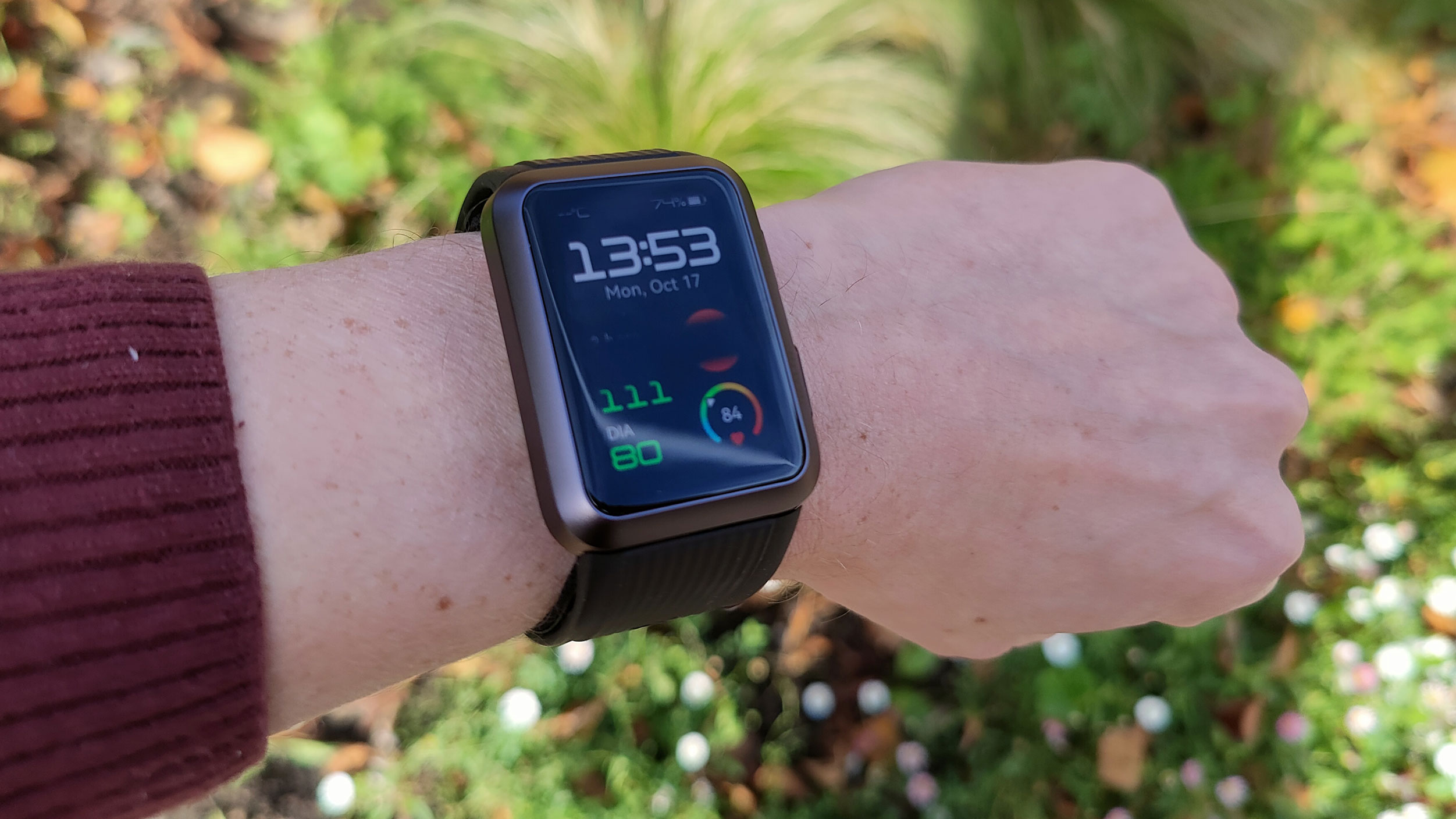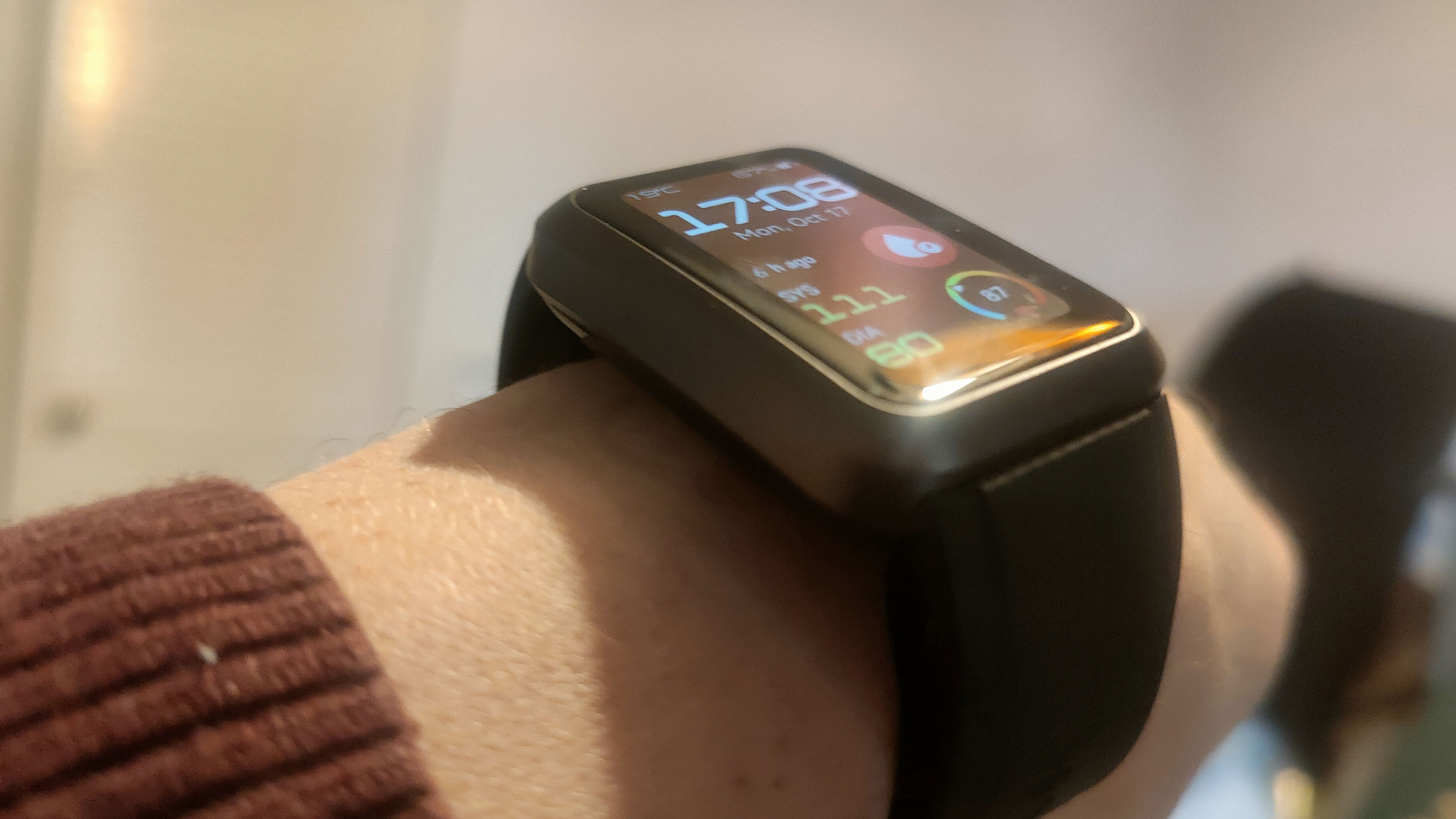The Huawei Watch D's blood pressure cuff is my favorite watch innovation in ages
I'm impressed with this new smartwatch band

Right now, I’m testing the Huawei Watch D. At first glance, it seems like a perfectly good fitness watch: the battery is adequate-to-good, and it’s got lots of workout modes, guided runs for beginners, intermediates and advanced runners, sleep and stress tracking, 24/7 heart rate monitoring, and all the stuff you expect a dedicated fitness watch to have in 2022.
It’s certainly worth considering alongside some of the best smartwatches with fitness features in our list, although it’s certainly not hitting the upper echelons of those devices. However, it’s got something they don’t: its watch band and strap are lined with inflatable sacs, which puff up around your wrist in the same way a blood pressure cuff does around your upper arm. You then need to remain stationary for two minutes, and the device will measure your blood pressure.
You can set regular reminders to take your blood pressure, and you can plot your scores, like you can your sleep, exercise and heart rate, to more accurately show trends across your historic readings, just as you can with the best Fitbits. It’s a really neat piece of kit, even if it’s not medically certified in the sense that it can completely replace a specialized upper-arm cuff you might find at the doctor’s surgery.
However, a spokesperson told me it’s more of an “indication” that if your readings aren’t what they should be, then it could be time to visit the doctor. Medical certification could be coming in the future, but it doesn’t mean the feature is useless in its current form.
On the contrary, lower accuracy compared to dedicated medical devices is fairly common with other consumer health tech products from the likes of Fitbit and Apple, with companies stating that irregular heart rhythm alerts are considered indicative rather than medically accurate.

I'm really impressed by this innovation. Taking a reading is quick and convenient, and feeling the cuff tighten around your wrist is oddly surreal. I’ve not compared its results to readings taken with an actual medical cuff in order to determine its accuracy (yet), but the fact that this blood pressure monitor isn’t another infrared laser sensor or piece of software, but a strap with inflatable sacs on it, is oddly comforting.
I grew up in the era in which you needed to attach a booklight-style torch to see your Game Boy at night, so the idea of extra physical hardware for your devices has always appealed to me from a nostalgic standpoint. It’s easier to get excited about because it’s not just another number on a screen: you can tangibly feel something happening with the tightening of the cuff.
Sign up for breaking news, reviews, opinion, top tech deals, and more.
After it was done, I immediately exclaimed to my wife; “Check this out!” and will probably do so to everyone I speak to for the next week. It's hard to get that enthused about just another graph on a screen. I can certainly see fitness watches from all companies in the future, from Apple to the best Garmin watches, packing a blood pressure app and selling a similar strap designed to pair with it.
My only problem with the Huawei Watch D so far isn’t with the blood pressure cuff, but with the design of the watch itself: namely, that it looks rubbish.
It’s boxy and thick, sticks out on the wrist, and is reminiscent of a Casio calculator watch. The two-button system on the side of the watch works well in combination with the touchscreen, but the actual chassis of the watch is pretty obnoxious. A sleeker option with the same fitness functions, battery life, and blood pressure cuff capabilities would be approaching a must-buy – depending on the price point, of course.

Matt is TechRadar's expert on all things fitness, wellness and wearable tech.
A former staffer at Men's Health, he holds a Master's Degree in journalism from Cardiff and has written for brands like Runner's World, Women's Health, Men's Fitness, LiveScience and Fit&Well on everything fitness tech, exercise, nutrition and mental wellbeing.
Matt's a keen runner, ex-kickboxer, not averse to the odd yoga flow, and insists everyone should stretch every morning. When he’s not training or writing about health and fitness, he can be found reading doorstop-thick fantasy books with lots of fictional maps in them.